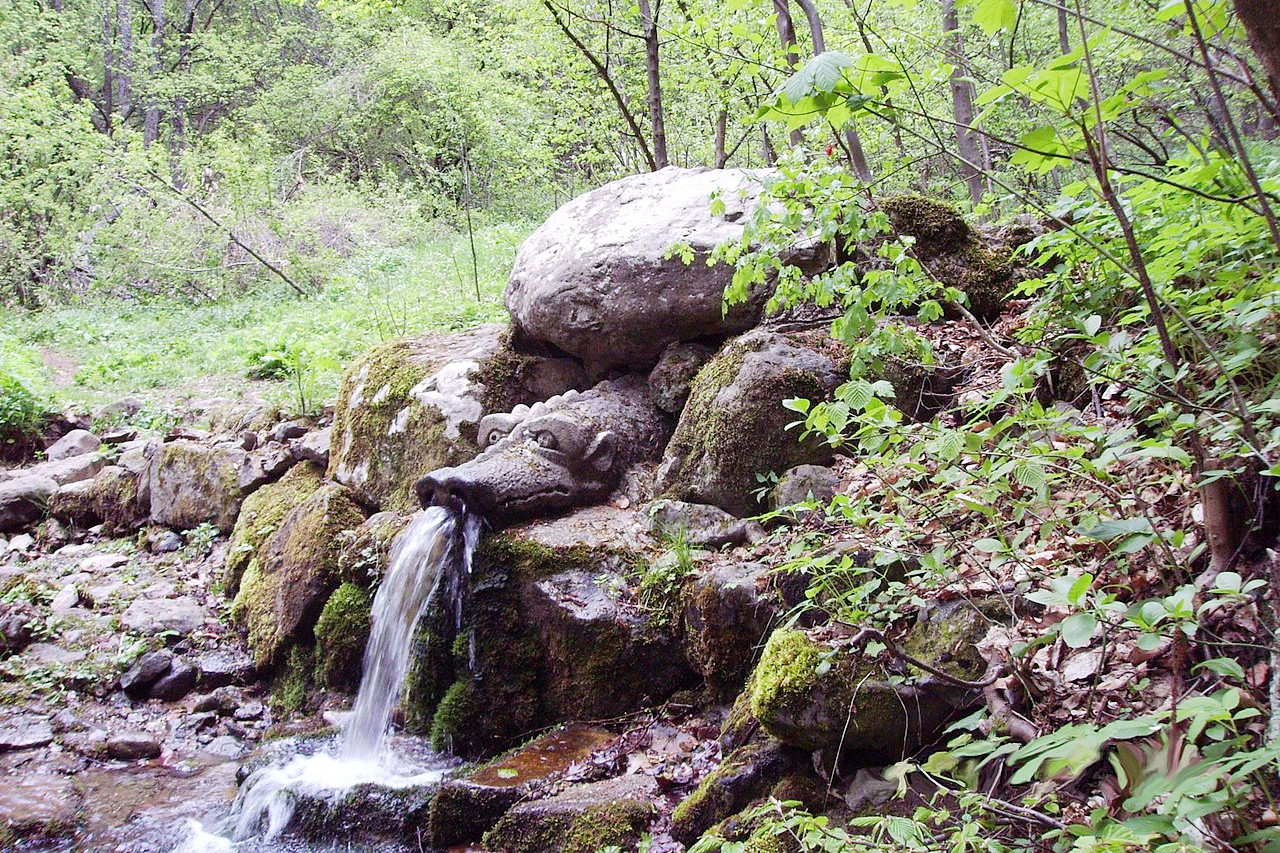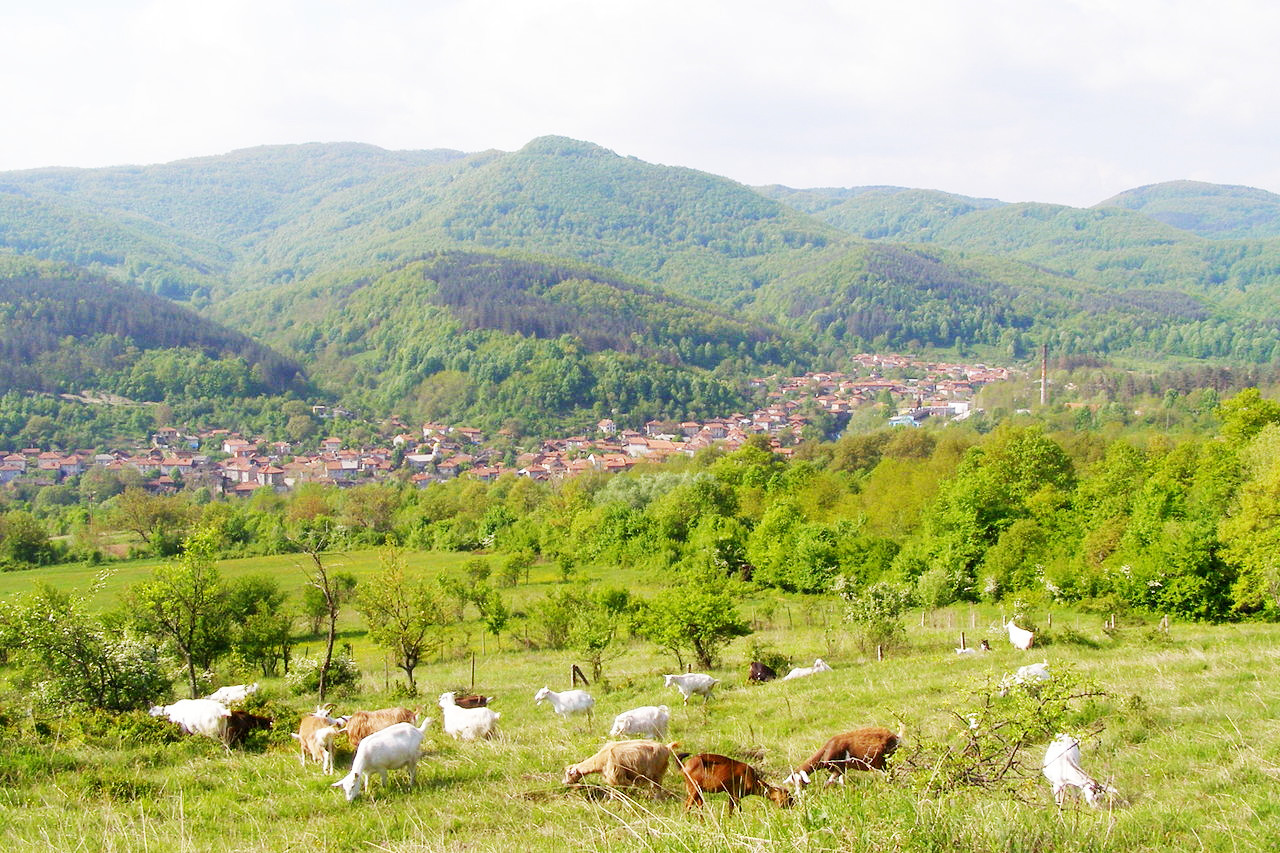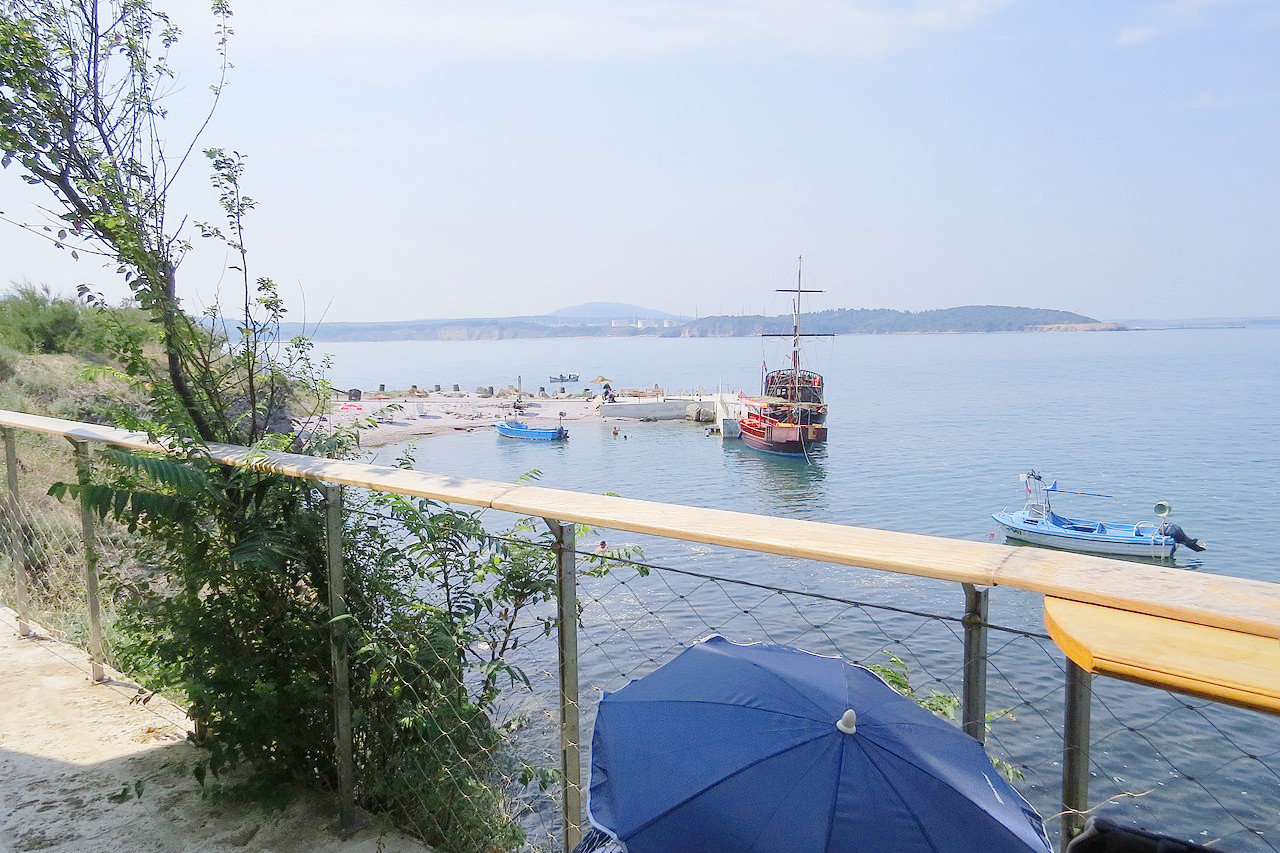The Geography of
Bulgaria
Why visit Bulgaria?
Bulgaria is a country with a rich history and culture. The country stands on the old overland route from Europe to Asia. There are high, snowy mountains, the fertile Danube valley, the Thracian plain, and the Mediterranean-like playground on the Black Sea. Sofia, the capital, was a settlement 5,000 years ago. Bulgaria is known for its beautiful mountains, rivers, lakes and forests. There are plenty of interesting places to visit in Bulgaria—from ancient ruins to traditional Bulgarian villages.
Contents
Map
 Relief map of Bulgaria
Relief map of Bulgaria
What is the landscape of Bulgaria like?
Bulgaria is a land of unusual scenic beauty. It has picturesque mountains, wooded hills, sheltered valleys, grain-producing plains, and a seacoast along the Black Sea that has both rocky cliffs and long sandy beaches.
The Danubian Plain
Across the north of Bulgaria is a mostly level plain in which a score of rivers and their branches flow out from the Balkan Mountains and have carved deep, narrow, meandering valleys to the Danube. Between the rivers long strips of treeless plain terminate at the Danube in bluffs 120 to 180 meters (400–600 feet) high, admirable sites for towns and for defense and control of the river. The valleys contain many villages and towns, great orchards of plums, apples, and cherries, and walnut and chestnut trees.
The Balkan Mountains
The Balkan Mountains (Stara Planina) comprise the biggest and longest mountain chain. As an extension of the Carpathian Mountains, the Balkan Mountains cover 700 kilometers (435 miles) across the central portion of the entire country. The Balkan Mountains are a highland region consisting of a broad limestone plateau rising to 2,500 meters (8,000 feet) and extending west to east through the northern half of the country. It is crossed by deep gorge-like valleys such as the Shipka Pass and the Iskar Gorge which is followed by a railway linking Sofia with the Danube at Nikopol.
The Central Lowland
South of the Balkan Mountains is a lowland area occupied in its western half by the upper valley of the River Maritsa. Burgas on the Black Sea at the eastern end of the central lowland, is one of the chief ports of Bulgaria. The lowland is the most fertile and productive area in Bulgaria. The cultivation of roses in the vale of Kazanlik is one of the most famous features of this region.In this valley, hundreds of thousands of roses are in bloom during the months of May and June—rose oil is distilled from the blooms.
Bulgaria has an eastern coastline on the Black Sea. The waters of the Black Sea are calm and free of tides or dangerous marine life. Called the “Hospitable Sea” by the ancient Greeks, the Black Sea is half as salty as the Mediterranean Sea and has gentle sandy slopes, making it ideal for swimming. The coastline is varied, with coves, rugged shores, wooded hills, orchards, and fishing villages dotting the expansive area.
The Rhodope Mountains
In the south and west of Bulgaria is a mountainous area composed of ancient rocks; this is the Rhodope, or southern group of mountains. It rises to nearly 3,000 meters (10,000 feet) and is the most rural part of Bulgaria. With its sharper outlines and pine-clad steeps the scenery resembles the Alps rather than that of the Balkan mountains. These mountains mark the southern and southwestern borders of Bulgaria and include the Vitosha, Rila, and Pirin Mountains. These last two ranges are largely volcanic in origin and are the highest mountains on the Balkan Peninsula. The imposing summit of Musala (2,925 m / 9,598 ft), the highest mountain in Bulgaria, forms the centre-point of the Rila chain, enclosing in a picturesque valley the celebrated monastery of Rila. The chain of Rhodope proper radiates to the east. This whole region is well-wooded.
What is the nature of Bulgaria like?
Bulgaria has a very varied natural environment. In the north the vegetation resembles that of the Russian and Romanian steppes; in the spring the country is adorned with the flowers of the crocus, orchis, iris, tulip and other plants, which in summer give way to tall grasses. On the Black Sea coast the plants become more Mediterranean-like. The plateaus and mountains furnish many specimens of sub-alpine and alpine plants.
The densest forests in the country are in the mountainous regions. Broadleaf forests blanket the low areas of both the Balkan and Rhodope ranges, while conifers thrive at the higher elevations. In general, broadleaf forests are the predominant forest throughout the country.
The principal forest trees are the oak, beech, ash, walnut, cornel, poplar, pine and juniper. The oak is universal in the thickets. Magnificent forests of beech clothe the valleys of the higher Balkans and the Rila mountains. Pine and spruce are rare in the Balkan mountainss, but abundant in the higher regions of the southern mountains, where the Macedonian pine (Pinus peuce) also flourishes. The wild lilac forms a beautiful feature in the spring landscape.
What is the climate of Bulgaria like?
See our main article: The Climate of Bulgaria
In general the Bulgarian winter is short and cold; the spring short, changeable and rainy; the summer hot, but tempered by thunderstorms; the autumn magnificently fine and sometimes prolonged into the month of December. The local contrasts are remarkable. On the Danubian Plain, exposed to the north wind, the winter cold is intense, but the summer heat is not unbearable. The high tableland of Sofia is generally covered with snow in the winter months; it enjoys, however, a more moderate climate than the northern district. In the east the sea moderates the extremes of heat and cold. In the south, the Central Lowlands possess a modified Mediterranean climate and are protected by the Balkan Mountains against the northern winds.
| Climate data for Sofia (1991–2020) | |||||||||||||
|---|---|---|---|---|---|---|---|---|---|---|---|---|---|
| Month | Jan | Feb | Mar | Apr | May | Jun | Jul | Aug | Sep | Oct | Nov | Dec | Year |
| Average high °C (°F) | 3.6 (38.5) | 6.5 (43.7) | 11.5 (52.7) | 16.7 (62.1) | 21.4 (70.5) | 25.3 (77.5) | 27.9 (82.2) | 28.4 (83.1) | 23.3 (73.9) | 17.6 (63.7) | 10.7 (51.3) | 4.6 (40.3) | 16.5 (61.6) |
| Daily mean °C (°F) | −0.5 (31.1) | 1.6 (34.9) | 5.8 (42.4) | 10.8 (51.4) | 15.5 (59.9) | 19.3 (66.7) | 21.5 (70.7) | 21.5 (70.7) | 16.8 (62.2) | 11.4 (52.5) | 5.9 (42.6) | 0.8 (33.4) | 10.9 (51.5) |
| Average low °C (°F) | −3.8 (25.2) | −2.3 (27.9) | 1.1 (34.0) | 5.4 (41.7) | 9.9 (49.8) | 13.4 (56.1) | 15.3 (59.5) | 15.3 (59.5) | 11.1 (52.0) | 6.7 (44.1) | 2.2 (36.0) | −2.3 (27.9) | 6.0 (42.8) |
| Average precipitation mm (inches) | 35.9 (1.41) | 35.5 (1.40) | 45.3 (1.78) | 52.3 (2.06) | 73.1 (2.88) | 81.6 (3.21) | 64.7 (2.55) | 53.1 (2.09) | 52.3 (2.06) | 53.9 (2.12) | 38.1 (1.50) | 39.9 (1.57) | 625.7 (24.63) |
| Average snowfall cm (inches) | 24.5 (9.6) | 20.6 (8.1) | 14.8 (5.8) | 3.1 (1.2) | 0 (0) | 0 (0) | 0 (0) | 0 (0) | 0 (0) | 1.5 (0.6) | 10.4 (4.1) | 20.7 (8.1) | 95.6 (37.5) |
| Source: NOAA | |||||||||||||
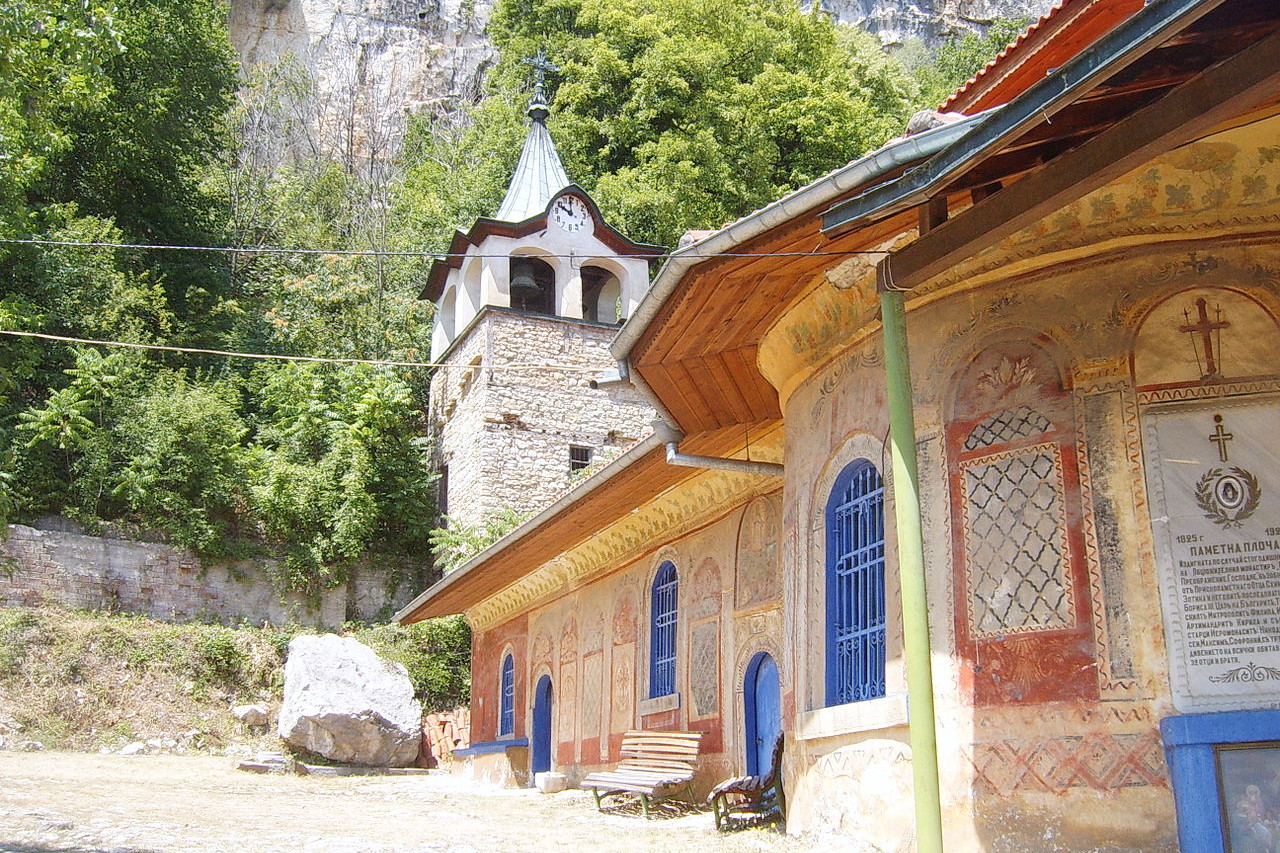 Transfiguration Monastery church, Veliko
Transfiguration Monastery church, Veliko
Bulgaria
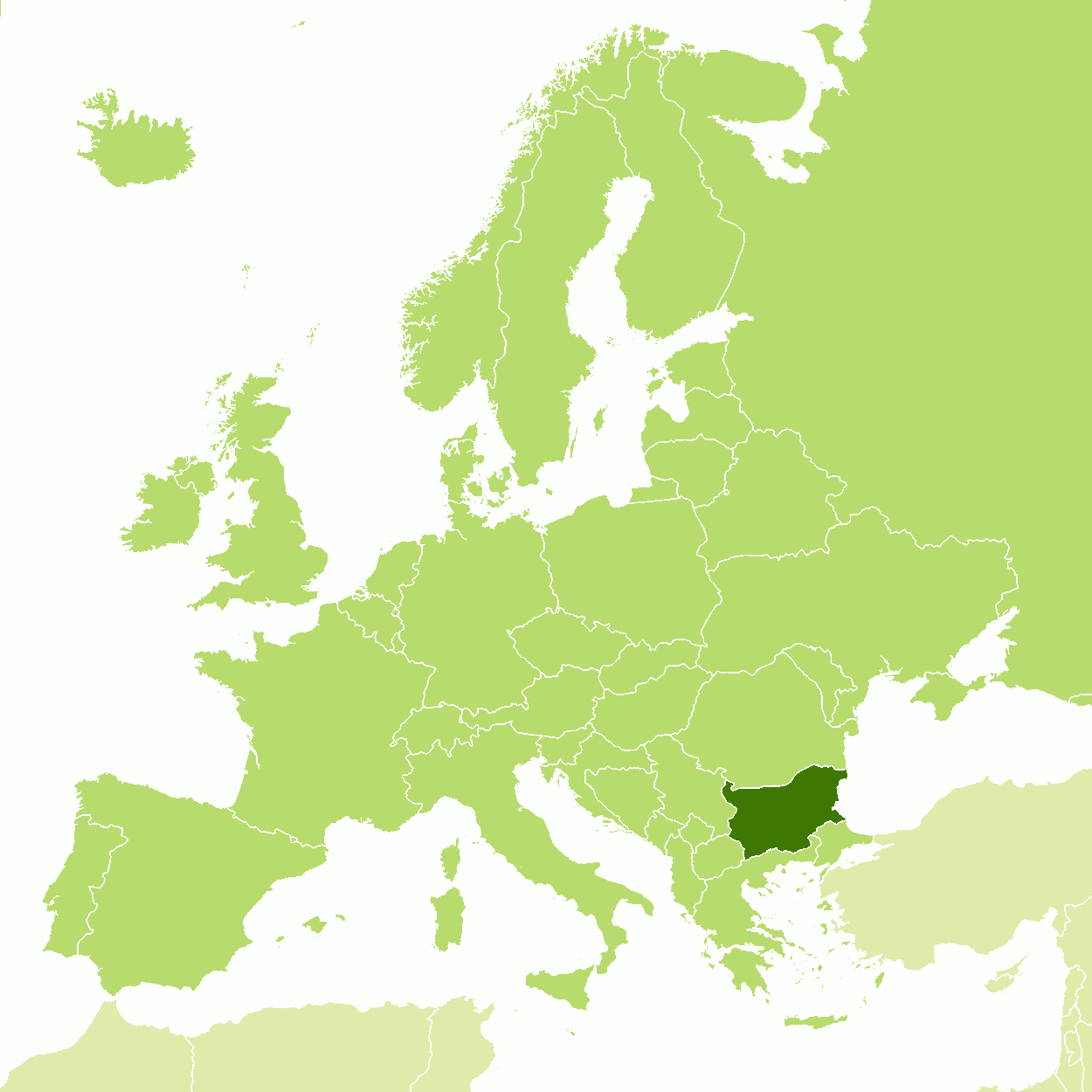
Discover and share
| Location: | Southeastern Europe, bordering the Black Sea; between Greece and Romania |
| Coordinates: | 42° 45′ N, 25° 15′ E |
| Size: | • 315 km N-S; 490 km E-W • 195 miles N-S; 305 miles E-W |
| Terrain: | Plains in the north and south divided by the Balkan Mountains. The Rhodope Mountains are found in the south and southwest |
| Climate: | A temperate climate becoming Mediterranean in the south. Cool winters and hot summers |
| Highest point: | Musala 2,925 m / 9,598 ft |
| Forest: | 35% (2010 est.) (source) |
| Population: | 6,863,422 (2022 est) |
| Population density: | Low (63/km²) |
| Capital: | Sofia |
| Languages: | Bulgarian 85%; Turkish 9.1%; Romani 4.2% |
| Human Development Index: | Very high (0.816) |
| Currency: | Lev |

